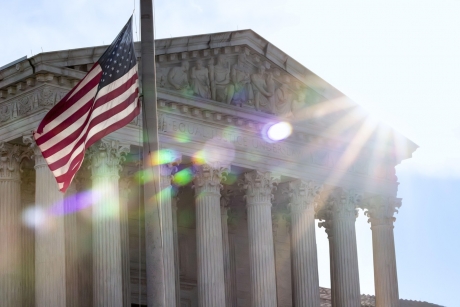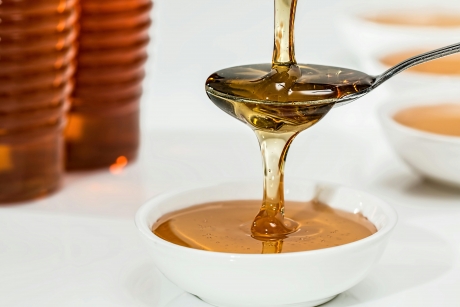AN INTRODUCTION TO BVLGARI RESORT BALI
Bvlgari opened its 59-villa property in Bali in September 2006. The breathtaking natural beauty of this secluded setting is matched only by the exquisite design of Bvlgari Hotels & Resorts newest addition to the luxury group which debuted in 2004 with the opening of the Bvlgari Hotel in Milan.
The three key elements that distinguish the Bvlgari Resort in Bali are its unique location, the blend of traditional Balinese style with dramatic contemporary Italian design, and the variety of services that have all been crafted with the same attention to quality that has always distinguished Bvlgari creations.
The Bvlgari Resort is located near the village of Pecatu and the stunning cliff-top site of the Pura Luhur Uluwatu Temple, on the island’s far southwestern tip. The Jimbaran Bay and the international airport lie approximately 20 kilometres north of the resort while Kuta, the touristy heart of Bali, is a 40 minute-drive. Uniquely positioned at more than 150 metres above the sea shore, the resort offers unrivalled views across the Indian Ocean. Nestled between the cliff and the ocean, a 1.5 kilometre long beach is accessible only through the resort’s inclined elevator.
 Bulgari Bali, Resort.
Bulgari Bali, Resort.Designed by architects Antonio Citterio Patricia Viel and Partners, the resort’s layout and overall design incorporates the culture and natural elements of the location. The hotel has been built and furnished using hand-cut volcanic stones, rich exotic woods and refined fabrics. Natural lava and palimanan stone are used for the garden and interior walls, refined bangkiray hardwood in the villas, natural green-colored sukabumi stone to clad outdoor showers, plunge and swimming pools. A collection of exquisite Balinese antiques and exotic art pieces adorn the entire resort. Furniture and decorative details, such as stemware, flatware, ceramics and woven fabrics, were designed and produced in Bali by a team of local artists and designers in collaboration with the resort’s architects.
The resort is comprised of 58 villas with ocean view, 5 mansions offering 3 to 5-bedroom accommodations, and the 1,300-sq.metre Bvlgari Villa. All accommodations offer a plunge pool and patio with secluded tropical garden, high technology features and an extensive range of amenities. Besides its unrivalled natural setting, the resort also boasts sophisticated facilities, such as the Italian and Indonesian restaurants, the lounge bar, the Spa and the cliff-edge pool which have been planned to become the vibrant hub of the resort. A Bvlgari store, a Balinese arts and crafts store as well as business, conference and wedding facilities complete the resort’s unique features. An impressive Hindu Temple rises on the highest point of the property, designated as a place of worship in accordance with the Balinese tradition, while, further inside, the imposing arrival pavilion with its magnificent proportions and masterful design welcomes guests.
DESIGN PROFILE
The challenge for the Italian architectural firm Antonio Citterio Patricia Viel and Partners was to create a unique experience by forging a location which had to be true to the place and not a picturesque representation of it.
At eye level, the resort landscape is featured by walls in bukit stone obtained from the promontory. The bukit stone is a white coral stone, quickly turning black when wet, thus complementing the surrounding environment dominated by dark grey boulders towards the sea and volcanic tuff downstream.
Around every guestroom, there is a private garden, a pool, an open-air living room, and an approximately 300-sq.metre area overlooking the thatched roofs and the Indian Ocean.
The resort has a twofold “spirit”. On the one hand, the quiet, private, and secret atmosphere of the villas ensuring maximum privacy to guests thanks to their walled separations. On the other hand, a glamourous, energetic and cheerful area welcomes the guests in the easternmost side of the resort arranged around a pool with a bar, sofas along the cliff, and a restaurant perched on the plateau overlooking the most enchanting shore on the island.
The resort is located in Pecatu, a wind-swept promontory 160 metres above the sea endowed with a drier climate with respect to the peninsula. The vegetation is scattered, which makes the rocky and coral stone visible to the eye.

The beach is located under the cliff, inaccessible both from the earth and the sea protected by the reef. An inclined elevator takes guests to the beach where the Beach Club welcomes them with its scattered deckchairs and a drink in the shadow. The hotel has been built to fully respect the environment. All materials utilized such as wood come from certified suppliers, respecting strict local and international laws.
A contemporary design and international style is revealed by the fittings of the villa rooms and public spaces. The bedrooms and bathrooms in each villa, the restaurant and some pavilions have doors and windows made of mahogany and glass featuring sheer Western design, though the materials are indigenous and locally hand-crafted.
Just one material and a single colour shade have generally been used for the structures, fittings, floors, and details which are made of bangkiray, a tawny type of mahogany wood from Java – the domineering colour note in the resort. Solid mahogany wood has also been employed in its darkest hue – almost black – for the artifacts which have expressly been made for the place.
All the villas include two equally large spaces, one for the bedroom, the other for the bathroom with black Terrazzo flooring, a bathtub and two showers, one located inside, the other one in the garden.
The open-air living room, between the private garden and the small swimming pool, is located southwards opening to the cliff and the sea. The larger 3 two-bedroom villas feature a large pool in the garden as well as a separate kitchen and a studio.
In the westernmost part of the resort, on a slightly higher position, stands the 1,300-sq.metre Bvlgari Villa featuring two bedrooms, two living rooms, and a kitchen. Its garden hosts a 17-metre-long swimming pool surrounded by an extensive terrace.
On top of the Sangkar restaurant on the cliff, the resort includes Il Ristorante – Luca Fantin serving a contemporary interpretation of Italian cuisine. The restaurant is located behind two roofs flanking the artificial pond.
The Spa, at the heart of the resort, is built at the brim of the cliff and offers a yoga pavilion, small pavilions open to the sea, and a floating stone bridge stretching over a pond with ocean view for relaxation.
The landscape has been designed with an eye to the traditional Balinese yards and gardens. The terraces have been created following the ground’s natural inclination. Typical plants have been selected and the original woods have been kept and relocated in the new landscape. Frangipane trees, a ubiquitous presence in the Balinese culture, are scattered everywhere in the Bvlgari Resort with their white blossoms spreading their fragrance around.
DINING
An Italian inspired and locally influenced cuisine distinguishes the two pool-side restaurants and the cliff-top bar. The Sangkar, the Indonesian restaurant, offers authentic Balinese dishes with a selection of international specialties, while the Italian restaurant serves a contemporary interpretation of Italian cuisine in a suggestive and more formal atmosphere. Superior quality of produce, refined techniques and creativity are the fundamental ingredients of the resort’s cuisine.
Il Ristorante – Luca Fantin
 Bulgari Bali, Resort.
Bulgari Bali, Resort.Overlooking a reflection pool, the resort’s signature Italian restaurant, Il Ristorante – Luca Fantin, pays homage to classical Italian specialties in a seductive ambience enhanced by suggestive soft lighting. Open only for dinner, the 36-seat restaurant features creative interpretations of classical Italian cuisine, perfectly blending the finest imported Italian ingredients
with the island’s organic produce. The result is a contemporary menu characterized by constant research for new colours, tastes and presentations. The restaurant offers a selection of over 200 wines, predominantly Italian labels and the finest selection of both new and old world wines, including exclusive collections of Champagne.
Sangkar Restaurant

Uniquely located on the cliff-edge and characterized by a more casual atmosphere, the all-day dining Sangkar restaurant proposes a creative kind of cuisine, combining regional recipes with modern culinary techniques. Sangkar means “cage” in Indonesian and the term is associated with the various styles of traditional rooster cages that are used for lighting and the restaurant décor.
Two communal tables in the heart of the floor space create a comfortable and relaxed setting. The 70-seat restaurant exhibits a stunning 9×1,5-metre artwork made of solid teak wood planks and over 100,000 copper “nails” especially created for Sangkar by Balinese artist Made Wianta.
The menu offers a vast array of Asian and international influenced specialties, drawing inspiration from seasonal selections of organically grown ingredients, the cuisine is characterized by the use of local delicacies such as mango blossom honey, Eastern Balinese sea salts and cold-pressed extra virgin coconut oil.
For lunch and dinner a Children’s Menu is also available.
Il Bar
 Bulgari Bali, Resort.
Bulgari Bali, Resort.Cliff-side lies the lounge bar. Sophisticated and comfortable, it is characterized by a spectacular terraced lounge – providing the ideal setting to enjoy breathtaking ocean views and magnificent sunsets. The bar’s ellipse arch counter is meant to recall the black resin bar of the Bvlgari Hotel in Milan, while a massive stone, entirely chiselled by nature, has been turned into a sculptural centrepiece. Shaped by the strong currents of a river, the art-piece was found after a huge earthquake in North Sulawesi.
The bar menu offers a selection of wines as well as a variety of cocktails and appetizers, inspired by classical Italian flavours. Afternoon tea is also served daily. Other dining facilities include the Poolside Bar and the Beach Club. A haven of relaxation next to the infinity-edge pool, the poolside area is the perfect setting to enjoy a selection of refreshing juices and healthy drinks. Nestled between the 150-metre cliff and the Indian Ocean, beneath a bamboo-clad bale, the beach side pavilion is another mesmerising location.
THE SPA

A unique space, exclusive treatments – based on traditional Asian traditions and techniques – are the distinguishing features of the oceanfront Spa at the Bvlgari Resort in Bali.
The architecture reflects an overall contemporary approach to design combined with traditional Balinese elements such as an antique Joglo house from Java, dismantled and precisely relocated at the site, as well as the same precious native woods extensively used throughout the resort. The Spa features a prevalence of water ponds and large windows creating a blend of surfaces and chromatic harmonies to offer a modern and relaxing environment.
The entry pavilion leads to the hand-carved teak wood Joglo House, transported from the Northeastern Central Javanese city of Kudus. The intricate carvings on the outer surface reflect the Javanese, Chinese and Arabic cultures as well as the vestiges of the old Hindu Majapahit Empire converging to the city of Kudus over the years. Further inside are the open-air relaxation lounge, the yoga pavilion and the swimming pool. Six fully equipped treatment rooms and 2 royal pavilions with outdoor gardens, outdoor rain showers and plunge pools complete the layout. The Spa facilities include a beauty salon and a state-of-the-art fitness center, rainshowers and aromatic steam rooms.
A unique concept of service and traditional Asian techniques – enhanced by modern practices in physiology and natural products –ensure the most personalized and attentive care. The Spa menu has been conceived to offer a complete range of Balinese, Asian and European therapies. Treatments offered include Bvlgari Signature Experiences, Balinese and Ayurvedic rituals, intensive facials, body wraps and holistic massages, provided by an expert staff of professionals.

The exclusive collection of “Bvlgari Signature Experiences” includes The Unforgettable Double Bvlgari Royal Lulur, a royal ritual experience realized by four highly experienced therapists (two for each guest) who work in synchronized harmony to deliver a unique treatment that includes a body massage rich in exotic oils and herbs. Other signature treatments consist of the Hot Stone Therapy, where heated volcanic basalt lava stones are placed on specific energy points or Chakras inducing deep relaxation and dissolving stress; and the Holistic Back, Face and Scalp Massage designed to re-hydrate the skin and release tensions using special hot stones and aromatic oils.
120 to 180 minute packages are available allowing a sequence of stress relieving massages and techniques. Spearmint and aloe exfoliating polish prepare the body for an aromatherapy massage in the Romantic Harmony Ritual, while a detoxifying salt and oil scrub is followed by a deep tissue massage in the Detoxifying Cleansing Ritual.
In-villa massage service is also available. As a prelude to an aromatherapy session in the comfort of their bedroom, guests may enjoy a Green Tea detoxifying bath or a Balinese Bath Ritual scented with palmerosa, myrrh and orange oils.
Each treatment or package begins with a Balinese foot ritual, while organic tonics such as tamarind juice or hibiscus ice tea are offered to guests to complete the Spa experience. The after treatment choice includes ginger and coconut cookies. A complete menu of Spa cuisine is also available.

BUSINESS AND WEDDING FACILITIES
A spacious function room with outdoor terrace and gazebo and an elegant boardroom comprise the resort’s business and wedding facilities.
With a capacity of up to 100 persons for dinner, the function pavilion has been designed for social gatherings and functions with direct access to an extensive terraced area facing the restaurants and the ocean. The terrace accommodates up to 150 for cocktails and up to 100 for banquets and is home to an intimate Balinese gazebo for wedding venue overlooking the Indian Ocean. Adjacent to the function room, the 16-seat boardroom is equipped with the latest audiovisual systems while full secretarial services are available at the business centre.
 Bulgari Bali, Resort.
Bulgari Bali, Resort.The Bvlgari Villa’s unique features and spacious living and dining facilities create the perfect setting for private gatherings and exclusive dining occasions. A gazebo is located in the villa’s lower level garden while the upper level lawn features a large lap pool and is the perfect venue for an outdoor wedding reception accommodating up to 50 persons.
 Bulgari Bali, Resort.
Bulgari Bali, Resort.SERVICES AND FACILITIES
Leisure Concierge From day trips to neighbouring islands to holistic activities and local tours, the leisure concierge is at the guests’ disposal to personalise every stay.
Banjar Butlers Balinese influence is also apparent in the village style structure of the Bvlgari Resort which is divided into 7 communes termed as “Banjars”. Each banjar is attended by banjar butlers or village chieftains to anticipate guest needs and offer an “invisible service”.
Bvlgari Boutique and Arts and Crafts Store In the elegant setting of the Bvlgari Resort, 2 distinct pavilions host a Bvlgari store and an arts and crafts store.
The Bvlgari boutique, which represents the first and sole Bvlgari store in Bali, offers the unique opportunity for clients to browse at leisure and enjoy Bvlgari jewellery, watches,
accessories and fragrance collection as well as a special Bvlgari Hotels and Resorts, Bali collection of silk shirts, swimming suits and hats, exclusively sold at this location.
A refined selection of gift items reflecting the thriving Balinese crafts tradition and rich artistic heritage is available at the arts and crafts store. Finest examples of traditional artefacts, such as ceramics, woodcarvings, stone sculptures, hand-woven textiles are displayed in the shop along with original island jewellery. A wide choice of international newspapers and amenities is also available.
 Bulgari Bali, Residencies.
Bulgari Bali, Residencies.NUMBERS AND CURIOSITIES
Height of the resort cliff from sea level 160 metres
Resort area 8.4 hectares
Garden walls’ Paras lava stone cladding 13,900 square metres
Tribal ceremonial antiques and exotic art pieces Over 80 items
Ceramics Over 1,500 items
Hand-made textile production 4 months
Weight of the contemporary artwork by Made Wianta situated at the Sangkar restaurant 1 ton
THE BUKIT AREA
Once the hunting grounds of the Balinese royal families, the Bukit peninsula is now home to some of Bali’s most exclusive villas and resorts, as well as one of the island’s holiest temples and some of the world’s finest surfing locations. Geologically and climatically, the area resembles the coastal regions of the Mediterranean far more than the verdant tropical landscape of inland Bali, a richly fertile plain surmounted by mountainous rainforests. The uplifted limestone plateau is one of three areas of vertical coastal cliff on and around the island and differs dramatically from the abundant surroundings in part due to its thin soil covering and lack of surface waters. Although fairly isolated from the rest of Bali, the Bukit peninsula is home to one of the island’s holiest places, the stunning cliff-top site of the Pura Luhur Uluwatu temple.
Roughly translated, the name Pura Luhur Uluwatu means “the temple above the rock” and legend would have it that the temple itself is a ship that was once turned to stone. Consequently the temple is especially revered by the fishing communities in the surrounding area where they pray to the sea goddess Dewi Laut. The temple and its three courtyards are protected by walls of white coral stone and parts are astonishingly well preserved considering the temple is reputed in some circles to be more than 1,000 years old. The tiered shrines contained within the temple, known as meru, are believed to have been established by the holy man Empu Kuturan, who came to Bali from Java in the 10th century. In the 16th century, a second holy man, the Danghyang Nirartha, traveled to Uluwatu bringing with him elements of the Buddhist religion which were absorbed into the practice of Balinese Hinduism. At Uluwatu, he decreed that the site was the ideal place from which to worship the gods and attain the state of moksa, or spiritual enlightenment, and the release from the physical universe required to enter heaven. This state of reverence and attainment is preserved to this day in every Balinese family temple where a single shrine covered with a black roof made from palm fibres, or pelinggih Uluwatu, is used to make offerings and worship to the soul of this great teacher of the Balinese Hindu religion. At more than 90 metres above the sea, the point at Uluwatu offers unrivalled views across the vast expanse of the Indian Ocean, uninterrupted by land from the Southern coast of Bali until the icy vastness of Antarctica. On a clear day, from the outermost courtyard, the tip of the island of Java is visible at a distance of more than 60 kilometres and as the sun sets, the temple is infused with a rich golden light and is one of the most magical experiences the island can offer.
The stunning ocean panorama that encircles the Bukit peninsula is one of the reasons for the area’s enduring popularity with visitors. Since the 1930s, when surfers first discovered the glassy tubes of Bali’s Western coast, the island has established itself as the home of some of the world’s finest waves, the majority of which are to be found on the coastline of the Bukit peninsula.

At Uluwatu, depending on the size and state of the tide, the perfect walls of Outside Corner and long barrels at Racetrack attract the best surfers in the world, often in training for professional contests. And while the limited access and facilities of the area preclude the holding of major surfing events, there is no doubt that the quality of the waves makes Uluwatu one of the world’s premier surfing destinations. Further along the coast, the narrow rocky path that leads through a cave to the quiet cove at Padang Padang masks one of Bali’s best kept secrets: a tiny picturesque beach that not only boasts more of those world-class waves, but also adds a clean and safe lagoon for the sun seeker.
The early inaccessibility of the Bukit peninsula has parallels with the discovery of its island home. Until the 1500s, Bali remained virtually closed to the outside world. Although the island was in the midst of the most significant shaping of its modern persona in the 14th, 15th and 16th centuries, with the migration of the Majapahit Hindu Empire from Java to Bali, it remained untouched by Western influences.
The first recorded expedition by a Western explorer, an attempt by a Portuguese ship to establish a trading post in Bali, foundered on the reefs off the coast of the Bukit peninsula and it was not until 12 years later that the dutchman Cornelius de Houtman paid a visit and provided the first account of daily life on this island paradise. His description of the vast wealth of the divine royal court of the Dewa Agung, with hundreds of wives and thousands of followers, was enough to begin the fascination with the island that continues to this day. It was not until the 1930s that tourism began to take hold, and Bukit was chosen as the site of the island’s first airport, a decision soon found to be questionable as the site was only safely accessible in extremely calm weather.
Shortly after, in 1938, the airport was moved to its present site in Jimbaran Bay and Bukit was to remain largely ignored until the 1970s with the development of the Nusa Dua enclave of resort properties. Luxury resort development continued in the 1990s and the Southern coastline is now dotted with million-dollar private properties.
Stretching South from the Pura Luhur Uluwatu Temple, the resort’s plateau is secluded alongside a still uncontaminated and peaceful coastline, offering a dramatic retreat setting.
ANTIQUES, TEXTILES AND CERAMICS
At the heart of the project for the Bvlgari Resort in Bali there is an accurate research into the history, religion, traditions, artistic heritage and daily life of the island.
The Balinese culture and architecture greatly inspired both the design concept and the construction process. The work of island artisans, who represent Bali’s vibrant artistic heritage, has been incorporated in the Bvlgari Resort project. All the hotel’s accessories and details have been expressly designed and produced in Bali, exclusively for Bvlgari: from every single piece of furniture to the handcrafted unique tableware and refined textiles. Centuries-old tribal ceremonial antiques and exotic art pieces are on display in the resort’s villas, gardens and dining areas. Local Indonesian art is the focus of the Bvlgari Resort antique collection. Spanning from Stone Age to present, the collection includes artefacts, specifically selected for their vibrant primitive energy and former practical use. Original and impressive works of art from contemporary Indonesian artists, created exclusively for the Bvlgari Resort, also decorate public spaces.
The wide range of woodcarvings, stones, statues, pots of various sizes and shapes, originating from Flores Island, Toraja, Sulawesi, Celebes, Java, East Java, Sumba Island, Nias, Sumatra and Bali featured in the resort reflect an artistic depiction of the local history. Woodcarvings and carvings from stone are among the oldest and most traditional art forms, usually gracing pillars, panels, doors, walls, lintels and shrines of temples, palaces and gardens over the region. Chiselled mainly from the local volcanic tuff and native woods, the prime function of these artefacts has always been to entice and entertain the gods.
Textiles play a significant role in the island’s cultural life not only as part of clothing which every individual must have for certain ceremonies, but also as temple hangings and decorations on other objects in the vicinity.
 Bulgari Bali, Residencies.
Bulgari Bali, Residencies.The hand-woven silk textiles called Songket are made by weaving gold and silver threads into intricate patterns to create cloths intended for grand gestures such as public theatrical performances and ceremonial displays of status and wealth.
A unique collection of ceramic and other functional and decorative objects of magnificent craftsmanship is displayed throughout the resort’s public spaces and guestrooms. Exclusively designed and hand-made in Bali for Bvlgari, the items result from accurate research on materials, methods and production techniques. Indonesian and Balinese themes – ranging from daily life to local culture and religion, the arts, crafts, and nature – inspired the creative process thus providing every single item with a touch of history and meaning, strongly tied to the region. Finely handcrafted with high quality local materials, the line depicts a wide range of shapes and objects, designed not only as mere decoration but also for indoor and outdoor use in the resort’s restaurants, bar and Spa.
For information and reservations, please contact: Reservations: (62) 361 847 1000
Website: www.bulgarihotels.com
25.10.2023 / Editor, Andreea Dragan

 acum 1 an
213
acum 1 an
213























 English (US) ·
English (US) ·  Romanian (RO) ·
Romanian (RO) ·